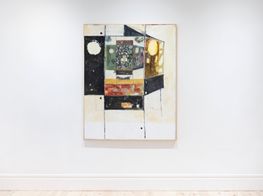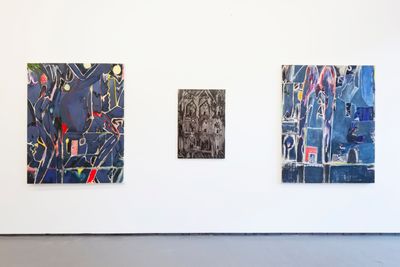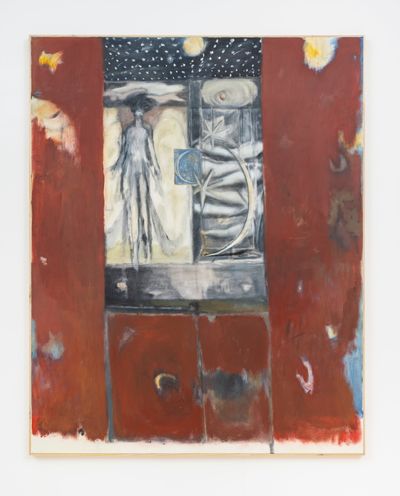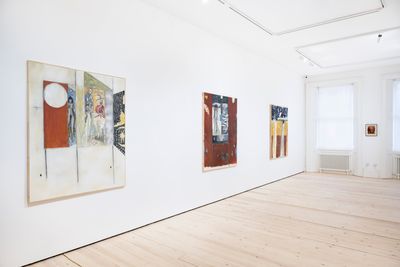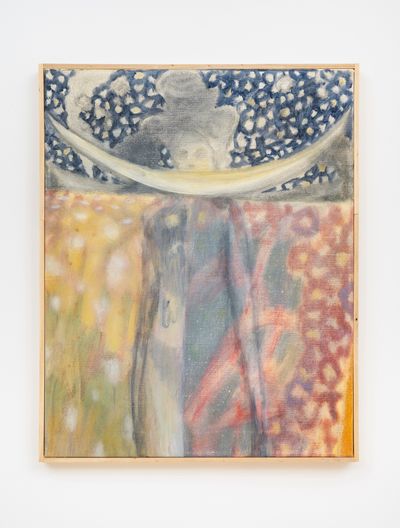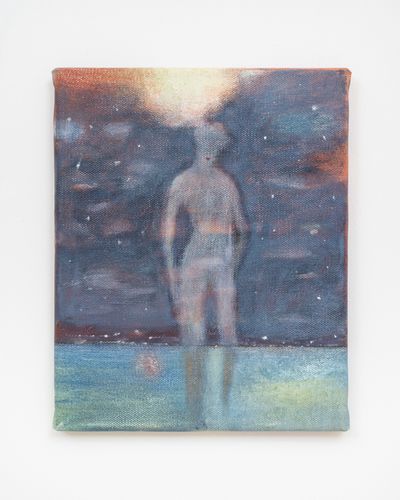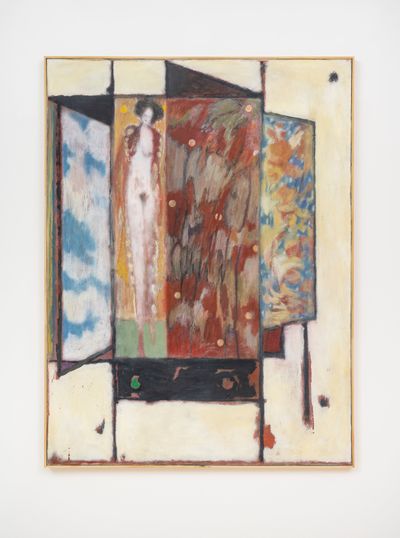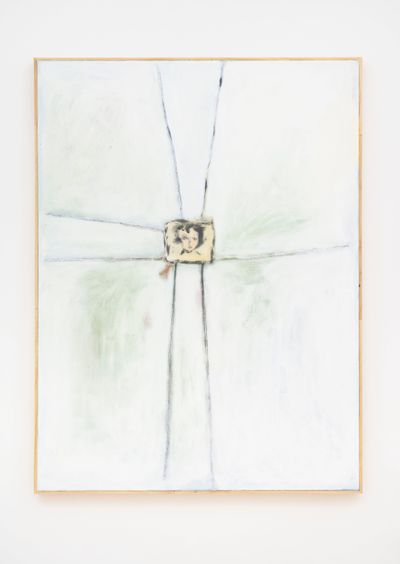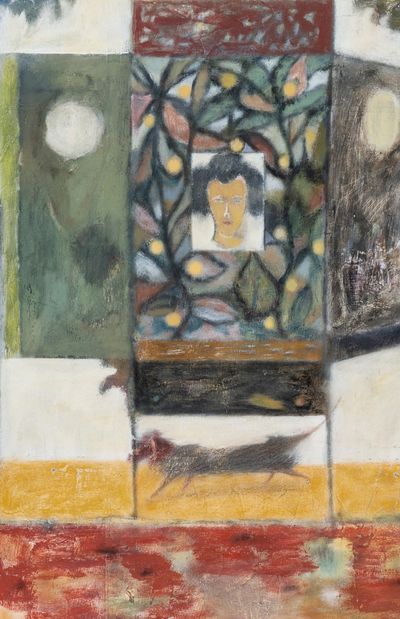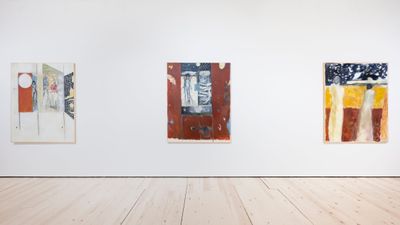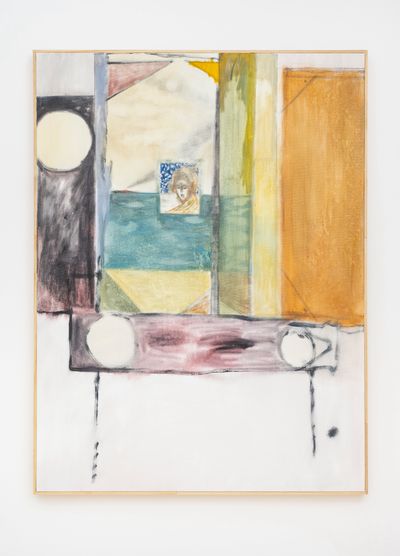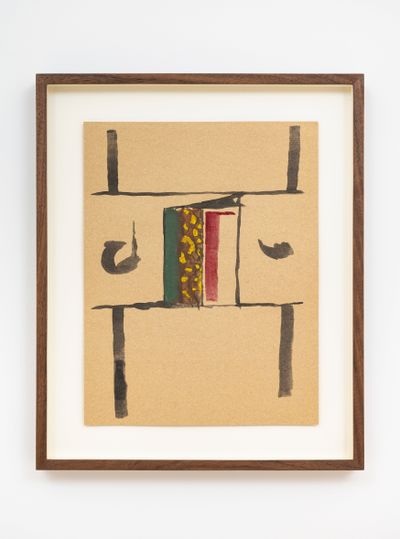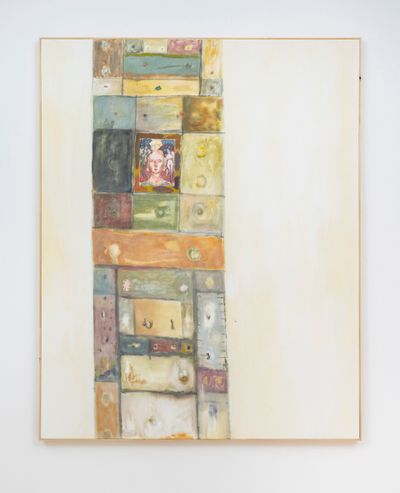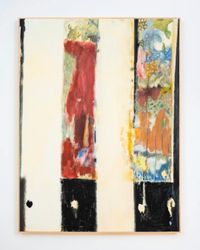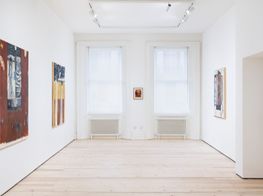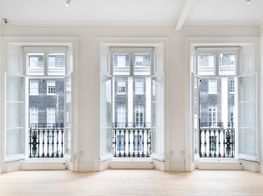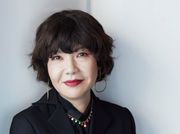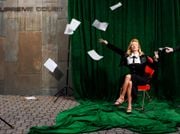Ted Gahl: 'Abstraction is a Starting Point'
MAMOTH | Sponsored Content
Courtesy the artist.
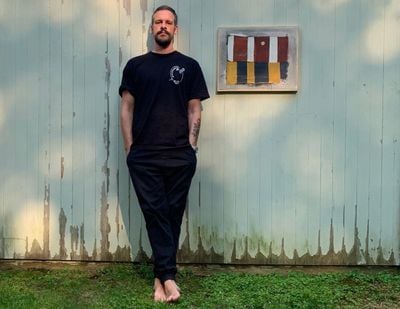
Courtesy the artist.
Shifting effortlessly between abstraction and figuration, Ted Gahl has a knack for switching things up.
Since completing his MFA at Rhode Island School of Design in Providence, Rhode Island in 2010, Gahl has generated a refreshingly diverse variety of styles and atmospheres across his canvases.
The post-industrial landscapes of Connecticut, where the artist is based, are a source of inspiration along with objects that have caught his eye. Last year, Gahl developed a series of paintings based on the form of a Shaker stove, having seen an exhibition pairing furniture from the religious movement along with Ellsworth Kelly prints.
Across his exhibition at Halsey McKay Gallery (March Pictures, 31 July–30 August 2021), one painting of the Shaker stove—its cartoonish, elongated neck resembling the Loch Ness monster—was accompanied by paintings in warm hues, referencing heat generated by the stove and containing a feel of summer despite having been created in the depths of a Covid-19 winter.
In other paintings, Gahl describes the experience of painting itself, as was the case in Night Painter at Dodge Gallery (6 October–13 November 2011). Across deep blue and grey-hued canvases, some containing the arcs of windows and doors, the artist reflected the act of painting at night.
Gahl's latest exhibition on view at MAMOTH in London (She is My Clock, 12 February–19 March 2022) looks further inward, with the artist 'corralling' emotions including loneliness, wanderlust, fear, confusion, and love into structures representing the grids of cabinets and screens to create a more personal, intimate form of abstraction.

From homely subjects to indications of faraway places, including the bounding dog in The Echo That is Love, to 'LONDON' written in cursive in an untitled gouache on paper (both 2021), a celestial feel reigns, with works such as She is My Clock (2021) framing a female figure on one side of a cabinet structure, its different compartments offering representations of stars, a crescent moon, and glittering lights.
In the following conversation, Gahl discusses the new directions taken with this latest body of work, along with the source materials and inspiration that have formed his trajectory as an artist.
TMYour style is renowned for being wonderfully diverse. Whilst 2020 paintings such as S.U.N.K. (Sitting Under Night's Kingdom) contain figurative elements, and signs and symbols find their way into earlier works such as your series 'Mind Reels' from 2017, others embrace total abstraction. What does abstraction mean to you?
TGI think abstraction, for me, was always heavily informed by objects or figures. Looking back on the abstraction-heavy exhibitions I've done through the years, I can see that they were all based on drawings of figures.
For a majority of the abstract paintings I've made, the templates were figurative drawings that then became vehicles to explore abstraction.
Abstraction is a way to arrange images in a very simple format. Paintings I make that might have an object or figure always start as a looser shape or ground, and the painting is kind of sculpted and whittled away to get to this object or figure.
Abstraction is the base mode of any painting I make. You kind of find yourself going through these different schools of thought, from a gessoed monochrome and very loose abstraction, to a tighter finished figurative or object-based image. Abstraction is a starting point.
TMThis doesn't always involve paint either, does it? Some of your works have incorporated wood and found objects. Does this offer an opportunity to move beyond the limitations of the canvas?
TGI think exploring three-dimensional objects or having objects on the surface had a lot to do with my early work coming out of Rhode Island School of Design. The studio atmosphere there was so much about freedom and experimentation, and I think that carried over for a few years.
Sometimes a painting can be a happy accident, where it almost works too well.
As the years have gone on, I think I am more and more interested in simplifying my work. Making more traditional paintings and drawings is what I feel like focusing on.
TMYour latest paintings at MAMOTH appear to look inwards, attempting to create 'pictures within pictures' through the inclusion of easels and screens. Can you tell me a bit about your thinking behind this latest body of work?
TGI like that you mentioned the word 'inwards'. That idea, of looking within, has been on my mind a lot in the studio.
For years I was making large abstractions that I think for the most part looked good on a wall. But I started to feel like these paintings weren't telling enough of a story.
Over the past few years, I have been looking to elicit more emotion through my work. I was feeling a lot of loneliness, wanderlust, fear, and confusion. Then, later on, love. I wanted to loosely convey these ideas in my work, to present something more personal.
I think a lot of my work has often straddled the line of both abstraction and figuration. Placing my objects and figures inside of these formal grids, these cabinets or screens, was a way to organise my images and thoughts. I like how loose and flowing elements are kind of corralled in these more heavy, abstract structures.
TMWhat is the role of objects and their personification across your paintings? Whilst easels, cabinets, and screens feature in this latest body of work, the silhouette of a 19th-century Shaker stove was the departure point for your paintings on view at Halsey McKay Gallery last year.
TGI think that a lot of objects can have an aura. I don't own many things, but things I do own are very special to me. A railroad spike from New York, a photograph of a man that I found in a burned down house in Oakland, California, an amateur ceramic sculpture I found at Goodwill....
These things are not technically worth anything, but they do have some sort of importance. They're often on my mind, and some I feel are important enough to become a painting.
The Shaker stoves are beautiful objects. Those paintings came out of seeing concurrent exhibitions pairing Shaker furniture and objects alongside Ellsworth Kelly prints. The two shows were warm and earnest yet elegant, and the stove's silhouettes became burned into my memory.
They also reminded me of my post-industrial surroundings, especially where my studio is located. Beyond the aesthetic appeal, I like that they represent heat, and to some extent, danger. Their strange shape almost comes off as noble. A docile brontosaurus or the Loch Ness monster.
TMIs there a manner of painting that you return to at all, that centres your practice and allows you to keep things moving during less productive periods? Or is it just a case of painting without expectations?
TGI'm always envious of painters who have a system. Canvases that are plotted out to a very intense degree, almost paint by numbers. It's very efficient.
I also love painters who beat and batter their work and are brave with their materials, and just go in blind. I am somewhere in the middle. I usually have a sense of what I would like something to be, but successfully getting there is another story.
Sometimes a painting can be a happy accident, where it almost works too well. Other works go through layer after layer of changes, and in the end, it may still not work.
I have a joke with friends that some stretchers are cursed. No matter what you do to it, it will never work. This painting has to be destroyed and you need to move on.
As far as productivity, I don't have a lot of hobbies. Even if I'm not working towards a show or a deadline, I like to at least be at my studio. Even if it is just organising or looking at things, it's where I like to be the most.
TMHow do you approach new experimentations? Is it an intuitive process that allows fluidity between one body of work and the next?
TGExtreme experimentation is something that happened at school and a handful of years out of school. I think for me at this point, as I near 40, one body of work definitely tends to inform the next.
I have a tendency to get excited by a theme or an idea in a work, and then use that in as many ways as I can.
I have a tendency to get excited by a theme or an idea in a work, and then use that in as many ways as I can. I think that this slightly more controlled experimentation is what I am into now.
I have also made enough work at this point that I can look back and revisit themes, which is something I have been really enjoying.
TMHow do you develop paintings outside of the canvas? Do you have a drawing practice?
TGI have a very active drawing practice, but most people don't seem to know that. I think that painters have a lot of drawings happening, but since they are a harder sell and expensive to frame, you don't see a lot of it out there in galleries unless you have a healthy market for your drawings.
I spend many nights at home planning out my paintings, placing things where I want them to go, so then I can get to the studio and have a blueprint to work off. I love literally drawing the rectangles that represent the canvas, having the edges to play with composition.
TMHow does your environment in Connecticut influence your painting practice?
TGThe area I'm in is kind of like a magnet. I've lived in New York and Los Angeles and I kind of always end up back here. My overhead for living is low, and this allows me to spend a lot of time on work.
I beat myself up for years about not being in New York, but with the rise of social media, and then the pandemic, I feel like the playing field has been levelled a bit.
Growing up here, I was very obsessed with New York. But as I get older, I really appreciate the simplicity and elements of the wilderness where I am. Sometimes I drive home from the studio at night and don't see any other cars. I think that's pretty rare in this day and age.
TMWhat experimentations are you looking to delve into in the coming year?
TGI think I'm just trying to maintain what it is I have going. For a show in the fall, I have a few experiments in mind involving scale and placement. I've set up a separate studio to make more substantial works on paper, so I am looking forward to that, and that has been a long time coming.
I think the experiment I'm really getting the most out of right now, is not experimenting too much. Paring down my personal imagery and going with my gut. Using the tools I have that work, to make better work. —[O]

